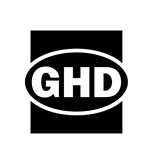Car parking or parklets: What is the economic benefit?
Alison Lee & Graham McCabe
Urbis, New South Wales
This presentation was delivered at the 2021 Online Conference Series and until October 2022 is only available to registered delegates and Content Access Pass holders via Interchange. For information on accessing this and other presentations please review the Content Access Pass options.
ABSTRACT
In 2020 Councils across Australia responded to COVID-19 restrictions by allowing businesses to operate in extended outdoor dining areas. Frequently these involved turning on-street car parking spaces into outdoor dining spaces (parklets). Thousands of parklets have been implemented across Australia, transforming main streets in Capital Cities, suburban shopping areas and in small towns. These have originally been seen as temporary measures, however many businesses, communities and government bodies are now wondering if there can't be a change in the way streets are managed that sees these car parking spaces transformed more permanently. This has been something that has happened in places like San Francisco and Montreal in the past, but not yet in Australia.
This is the first study that quantifies the economic benefits of parklets in Australia. Whilst the study focuses on the inner city of Melbourne, it has findings relevant to a range of settings. Specifically, it quantifies the economic benefits and costs associated with parklets, as follows:
- The cost associated with parklet programs (including foregone revenue from parking);
- The benefits to individual businesses (additional revenue generated per week);
- The broader economic benefits to the region (such as increased revenue from capacity, the social value of amenity and increased or maintained employment); and
- The sentiments of businesses and residents/visitors towards parklets.
The study has implications for the way in which streets in shopping strips are managed. The paradigm which dictates that 'the more on-street car parking in shopping strips the better' is challenged by these findings. In a context in which local shops are continually competing with the convenience of shopping malls and big-box retailers, the parklet initiative together with other amenity differentiators can create a point of difference and real economic benefits.
Author(s)
Alison Lee | Urbis
Alison Lee is a highly experienced transport planner with a background in projects across Australia and New Zealand. Alison has a masters level degree in Urban Planning and has specialised as a transport planner over her 18-year career. She has a specific interest in the hidden economies of cities and active transport. She loves quantifying the benefits of benign things such as parking spaces, a bike hoop or a parklet to make us think twice about how we use our valuable road space (which is indeed public space).
Alison’s research on the economic benefits of cycling has been widely published and cited in publications including Austroads Guidelines, Bicycle Network guidelines, the Australian Planner (journal) and urban planning publications including the Atlantic Magazine’s CityLab.
Alison is a passionate advocate for public and active transport as a building block of urban environments and is a supporter of great cities and successful places.
Graham McCabe | Urbis
Graham McCabe is a leading transport planner and traffic engineer with 25 years experience in innovating in traffic modelling, bicycle facilities and public transport.
Graham has deep experience and understanding in the interrelationship between land-use, activity and transport and is an advisor to government in Australia and internationally.








